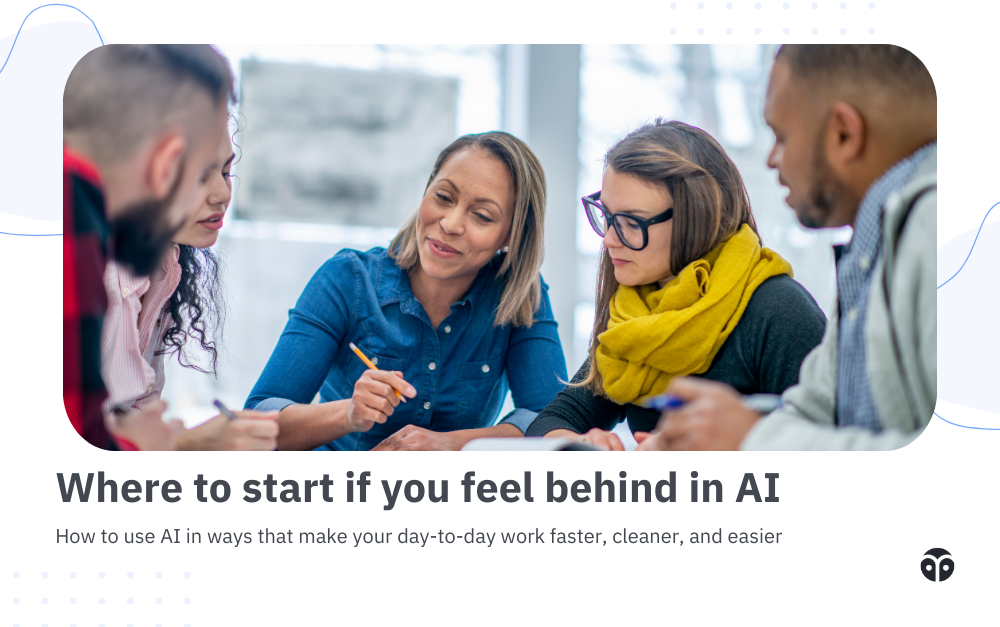Where to start with AI if you feel behind as a software engineer
Learn how to integrate AI tools into coding and products, starting small and growing fast.

AI tools are everywhere in 2025. Every week, it feels like there’s a new release, a new benchmark, a new “must-have” tool. If you’re an engineer who hasn’t jumped in with both feet yet, it’s easy to feel like you’ve already missed the wave.
The truth is that most engineers are still figuring out where AI fits into their workflow. You don’t have to overhaul your stack or build an LLM feature from scratch. You can start by using AI in ways that make your day-to-day work faster, cleaner, and easier, and then build from there.
Identify the right entry point
There are two big ways AI intersects with engineering right now:
- Use AI as a coding tool. Assistants like Copilot, Claude Code, or a CLI helper can speed up writing, refactoring, testing, and debugging.
- Build AI into products. Ship features such as summarization, recommendations, or automation inside your app.
Both matter, but they’re different muscles. Shipping AI features usually needs product sense, data access, evaluation frameworks, and user feedback loops. It’s great if you’re already working on those problems.
If you’re starting fresh, begin with AI as a coding tool — it fits any codebase, pays off quickly, and doesn’t require approval from a roadmap committee.
Start small and grow gradually
Treat AI adoption like a ladder. Each rung builds intuition for the next.
- Step 1: one-liners. Safe, quick wins. Rename variables, fix syntax, write a quick regex, convert a loop to a map/filter, or draft a doc comment.
- Step 2: functions (10–50 lines). Move to tasks in the 10–50 line range. Ask AI to add parameters, refactor logic, or handle error cases.
- Step 3: files. Once you’ve built intuition, try full-file generation or refactoring. Expect some misses — the goal is to learn when AI helps and when it slows you down.
- Step 4: multi-file and systems. Only after earlier steps feel natural should you try agents, repo-wide changes, or cross-service workflows.
Rule of thumb: if you can’t judge the quality of the output, the scope is too big. Shrink it until you can.
Integrate into your existing setup
Engineers are creatures of habit. You have your editor, your shortcuts, maybe even your favorite keyboard. Don’t expect AI to work like a magic button you click in some new interface.
Instead, integrate it incrementally into the setup you already know. Keep your workflow familiar, but introduce AI in places where it can make small improvements.
Treat those early weeks as experimentation. You’ll waste some time at first, and that’s normal. Try AI on tasks where you already know the right answer. Compare what it gives you to what you would have written yourself. Notice when it saves time and when it doesn’t.
Use AI as a collaborator, not a crutch
There’s a temptation to treat AI like a magic box: tell it what you want, let it spit out an answer, and ship it. That’s “vibe coding,” and it’s not safe for production.
A better way to frame it:
- Autocomplete for your thoughts. You already know what you want the code to do. AI writes it faster, wires up edge cases, and fills in boilerplate.
- Brainstorming partner. Use chat interfaces to explore possible solutions at a high level, then bring the best one back into your tools for implementation.
Another helpful mental model: imagine you suddenly hired 100 interns. Your job would be to structure your codebase and instructions so they could be productive. AI works the same way.
Measure progress by outcomes, not vanity metrics
When you first add AI into your workflow, it’s tempting to look for big, flashy numbers: “3x faster coding!” or “80% fewer bugs!” But real productivity gains rarely show up in a single metric. The impact is usually subtle at first, and it stacks over time.
Is AI “working” for you? There’s no single metric. But you can look at progress in a few areas:
- Cleanup work. Are you clearing out low-priority fixes and small tasks you would’ve skipped before?
- Feature velocity. Do you ship new features a little faster than you used to?
- Debugging depth. Is AI surfacing solutions in areas you aren’t an expert, giving you better outcomes than you’d have reached alone?
If you want numbers, pick one or two metrics your team already tracks and watch them over a month or two. The goal isn’t a headline-grabbing statistic. It’s steady, compounding improvement that makes your team feel faster, cleaner, and more confident in their work.
Learn how to level up with AI
If you're exploring how to use AI more effectively in your work, you're not alone. That’s why we built Ship with AI — a program for senior engineers who want to work more efficiently and improve their skills, with AI as a collaborator.
Learn more and apply here.



